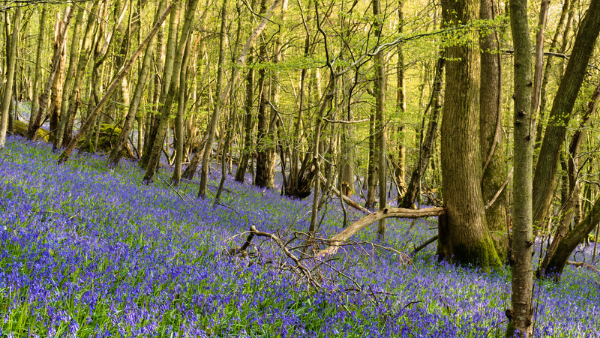The purpose of this article is to explain the basics of Biodiversity Net Gain.
What is Biodiversity Net Gain (BNG)?
The long-awaited Environment Act 2021 (the Act) received Royal Assent on 9 November 2021 and introduces a mandatory 10% BNG requirement in England for all developments under the Town and Country Planning Act 1990 (TCPA), with very limited exceptions. DEFRA is currently consulting on when this requirement will be triggered and the proposed exemptions. The Act follows the existing BNG policy requirement in the National Planning Policy Framework. Schedule 14 of the Act inserts a new schedule into the TCPA, requiring applicants to submit a biodiversity gain plan at the planning application stage, detailing how the development will meet the minimum 10% BNG requirement. However, the 10% is a minimum requirement, and individual local planning authorities (LPAs) will have the power to set higher percentage thresholds should they wish. The principle of BNG forms part of the government’s 25-year plan on the environment for England – to leave it in a better state than we found it.
How is BNG measured?
The BNG objective is met in relation to development if the biodiversity value attributable to it exceeds the pre-development biodiversity value by at least 10%.
The biodiversity value attributable to development is a total of:
- the post-development biodiversity value of the onsite habitat;
- the biodiversity value of any registered offsite biodiversity gain allocated to the development; and
- the biodiversity value of any biodiversity credits purchased for the development.
This means that the first task for a development is to assess the pre-development biodiversity value and this, like other calculations of biodiversity, is achieved by the Biodiversity Metric 3.0, published by Natural England on 7 July 2021. The relevant date for this calculation is the date of submission of the planning application and a baseline date of 30 January 2020 has been set, which means that any work carried out after that date that reduces the biodiversity value of the site is to be disregarded. This is a mechanism to ensure that landowners do not artificially lower the biodiversity value of their sites to achieve a notionally higher gain at a later date.
Achieving BNG
It will be appreciated that developers have three options (or a blended approach) to providing the biodiversity net gain as follows:
- on-site provision;
- offsite provision; or
- statutory credits.
It will also be apparent that for many developers, the prospects of developing onsite BNG will not be attractive, as the area could be better utilised for other purposes or more profitably used for development. Therefore, the provision of offsite BNG is a rapidly emerging market and the use of so-called habitat banks is becoming more commonplace. What may also emerge is the practice of developers optioning larger areas of land to factor in the provision of BNG in the future. However, in considering their options as set out above, developers have a positive obligation to apply the mitigation hierarchy: first, to avoid biodiversity loss, then minimise it, then mitigate the effects of the development, and then finally to offset or compensate for any loss. However, in practice, this means a developer should:
- aim to avoid or reduce biodiversity impacts through site selection and layout;
- enhance and restore biodiversity on site.
- create or enhance offsite habitats, either on their land or by purchasing biodiversity units on the market; and
- as a last resort, purchase statutory biodiversity credits from the UK Government, where they can demonstrate that they are unable to achieve biodiversity net gain through the available onsite and offsite options.
DEFRA, as part of their consultation on BNG, has published a market analysis that uses a working assumption that 50% of biodiversity net gain would be delivered off-site which creates an annual demand of 6,200 biodiversity units with an estimated value of £135,000,000. This indicates the size of the potential habitat banking market.
In drawing together their biodiversity gain plan, developers will then have to assess the post-development biodiversity value, which will take into account the effects of the development and any positive effect caused by green space being incorporated within the development (such as Suitable Alternative Natural Greenspace (SANG) land).
DEFRA Biodiversity metric
The DEFRA Biodiversity Metric uses habitat features as an approximate measure for estimating the value of biodiversity net gain on a site. The metric takes into account the distance from the development site of the offsite provision of BNG and will penalise the value of habitat creation accordingly. The greater the distance from the development, the lower the deemed value of the habitat. If a habitat bank is within the same LPA, then there is no penalty applied. If it is in the neighbouring LPA, then a 25% deduction is made. If it is beyond that, then a 50% discount is applied.
In practical terms, if these deductions are made, it will increase the number of biodiversity credits that the developer will need to produce to satisfy the BNG objective. The Biodiversity Metric will calculate the number of biodiversity units that a site can provide and therefore the number that will be available to satisfy the BNG demand for a particular development. These units can then equate to biodiversity credits, which will be purchasable from habitat bank providers or the units can simply be created by a developer in collaboration with a neighbouring landowner or within the development itself.
Local Nature Recovery Strategies
The Biodiversity Metric also takes into account the strategic significance of certain sites. Local Nature Recovery Strategies (LNRS) will be implemented on a countrywide scale under the Act. These are seen as a way of reinforcing the existing duties of LPAs in promoting biodiversity in their local areas. LNRS are currently part of national policy and over time will be incorporated within local policies. Areas designated as LNRS will be given priority for the purposes of offsetting. This means that there will be an advantage for landowners located within designated LNRS sites and such sites will be given an increased weighting under the calculations in the metric accordingly.
Ecological corridors
This strategic significance is not the only consideration as also concepts such as ecological corridors will be considered on the basis that ecological connectivity is an important concept in biodiversity. Therefore, landowners will need to consider how their landholdings connect and also how they might inter-relate with other landowners in the area, to provide a web of connected habitats, which may have a greater combined value than some of the individual parts.
Biodiversity gain site register
All habitat sites will have to be on a biodiversity gain site register which is likely to be administered by Natural England. Such sites will likely be provided by Habitat Bank providers, individual landowners, and local planning authorities seeking to set up their own schemes. Whoever is providing the site, it will have to be registered on the register and will have to comply with the rules for site eligibility.
Biodiversity gain plan
It will be a condition of planning permission that a biodiversity gain plan has been submitted to the LPA and has been approved by them. The biodiversity gain plan must include:
- the steps taken to avoid and/or minimise the adverse effects on the biodiversity of the on-site habitat and any other habitat;
- the pre-development biodiversity on-site;
- the post-development biodiversity value on-site; and
- how BNG is to be delivered.
Statutory biodiversity credits
The BNG will be made up of biodiversity gain, whether on-site or further afield, and any statutory biodiversity credits that may be purchased. These statutory credits are intended to be a last resort and will be purchasable from the Secretary of State. Statutory credits may only be purchased when all other options are exhausted.
The Act makes provision for statutory credits and determines that the price payable for them must be set at such a level that does not discourage the registration of land in biodiversity gain sites elsewhere. Prices will be intentionally uncompetitive with the private market in the hope of making statutory credits unattractive to developers. Natural England will likely be the body that sells statutory credits, as it is already developing a statutory credit sales platform for this purpose. It is proposed that any revenue generated from the sale of statutory credits will be reinvested into local habitat creation projects. Likely, such sites might well be within the LNRS network or have some other strategic importance.
Habitat sites and habitat banks
Establishing a habitat in advance and selling the resulting units to developers when needed can ease supply and demand. In summary, a habitat site is required to be maintained for 30 years after the completion of the habitat enhancement works, to provide sufficient longevity to enable biodiversity to be established. This period of time was criticised by many during the passage of the Act through Parliament as not being long enough and there is a provision under the Act for the Secretary of State to extend this timeframe in the future.
Conservation Covenants
The provision of habitat sites will be facilitated by the creation of conservation covenants by the Act. The conservation covenant provisions are due to come into force on 30th September 2022. These are private agreements between landowners and responsible bodies, which require the landowner to manage the land for conservation purposes. It is anticipated that the responsible bodies are likely to be LPAs, charities, and organisations such as wildlife trusts. Conservation covenants are seen as a key means of delivering BNG, as previously it was very difficult to bind successive owners and occupiers of land into long-term conservation agreements. Failure to deliver BNG can result in enforcement action under existing powers, as well as the new powers introduced in the Act by way of conservation covenants.
Concluding remarks
Although some areas of the Act are considerably detailed, the specifics of many of the other areas have been left for consultations, later in the process. For example, the nature and biodiversity provisions in Part 6 of the Act are not yet in force and the commencement date has been left open-ended; it is due to come into effect “on such day as the Secretary of State may by regulations appoint”.
DEFRA is currently consulting on the practical and legal implementation details of the new BNG requirement for development so watch this space for further developments.
Further and more detailed information about the specific elements of this topic can be found on here.

